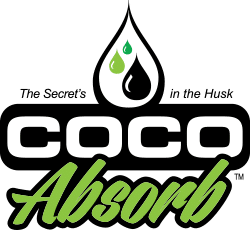Nature seems to always have a solution to man’s problems. Science will eventually come around to discover what has usually been right under our noses. Take the bogs of the northern hemisphere, for example, home to mosses that have been growing for thousands of years. According to scientists, these peat bogs can store more carbon than any other terrestrial ecosystem. In fact, there is a school of thought that suggests their ability to store carbon may actually be curbing global warming; since some of the world’s largest bogs store over 500 billion tons of carbon. That’s more than all the trees in the world!
Since around the 1940s, peat moss has been in demand as a soil amendment/growing medium for the horticultural industry, mainly because of its air porosity and water retention properties. As a matter of fact, many commercially available potting soils will contain a percentage of peat. Even more recently, peat has been touted as an organic industrial absorbent, a solution for picking up oil spills.
Sounds great right? It should be – the problem is that its’ absolutely unsustainable. There is a very limited area in which these bogs can flourish, and these particular ecosystems take forever to develop. So long, in fact, none of us will be around to see them re-grow. In places like Canada and the UK, peat is mined by cutting large drainage ditches into the wetlands and letting the bog dry out and die. Once dead, surface vegetation is removed and the surface peat layer is dried by the sun and winds. The dried-out peat layer is then vacuum harvested and transported to a processing facility for packaging. Remember all those tons of carbon the bogs are storing? Well, this process releases it right back into the atmosphere. That’s not good.
The mining of peat bogs is so concerning that back in 2010, the UK’s Natural Environment Minister Richard Benyon said:
“ . . . I want to see peat eliminated from the amateur gardener market by 2020. We need to go further if we are to protect our natural environment and reduce greenhouse gas emissions. This will be challenging, but more sustainable and good quality peat-free alternatives are already available, and I believe it is achievable for peat to be phased out in all markets before 2030.”
One of these quality peat-free alternatives happens to be coir; the very stuff CocoAbsorb™ and CS Soils are made of. Coir is the “dust” found in between the fibers of the coconut husk. When the coconut is harvested for the meat, milk, and water, the leftover husks are taken and the long fibers are extracted to make everything from doormats to insulation. For years there was no use for the leftover husks from this process and so they were discarded in huge mounds that would eventually become snake-infested. In some countries, it was even burned.
Recently however coconut coir has gained acceptance as a peat substitute, both in the horticultural and spill absorbent industry. Coir’s natural air porosity and superior water retention properties outperform peat in horticultural and hydroponic applications. The use of a coir based soil amendment like CS Soils also limits the pathogen concerns associated with peat moss. Since peat is drained from bogs, any diseases that may have been active in the original plants continue to be present. This makes the transmission of these same pathogens to your plants possible if the peat came from a diseased portion of a bog. Coir’s antimicrobial nature actually deters pathogens that could normally be harbored by peat, making it a safer alternative for the home hydroponic grower or even commercial nurseries.
As an industrial absorbent, no other natural substance comes close to coconut coir in performance or sustainability. To the delight of our customers, CocoAbsorb™ has successfully demonstrated coir’s ability to absorb up to 9 times its own weight in fluids. The natural honeycomb structure draws fluids in and encapsulates them, so anyone using CocoAbsorb™ can be sure that anything absorbed will not be released back into the environment. In fact, it passed the 96 Hour Fathead Minnow Bioassay, a test in which one pound of CocoAbsorb™ was mixed with one quart of used oil and then exposed to 20 fathead minnow over a four-day period. In the end, CocoAbsorb™ did not release any of the absorbed oil into the water and killed zero fish.
As a growing medium and an oil absorbent, coconut coir is a superior alternative to peat. What’s more incredible is that it’s completely sustainable. A coconut tree can not only live to be between 70-100 years old, but each tree can also produce up to 200 coconuts per year requiring no chemical fertilizers for growth! As the byproduct of the existing coconut fruit industry, Coco Products is proudly taking a leftover substance that was once discarded and re-purposing it into something useful for the benefit of all mankind.
